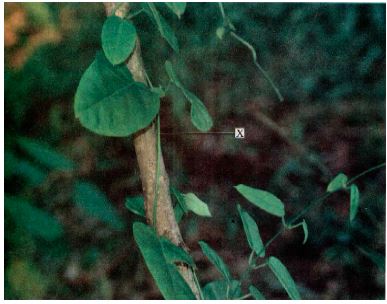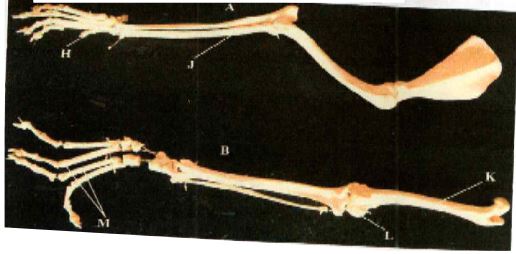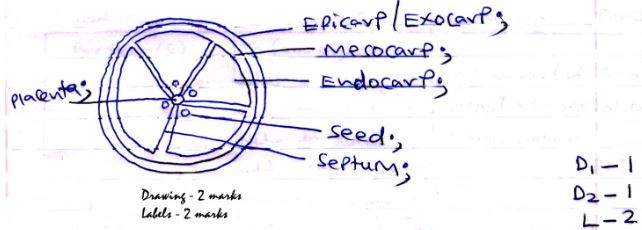- Answer all the questions
- You are required to spend the first 15 minutes of the 1 ¾ hours allowed for the paper reading the whole paper carefully before commencing your work.
Answer all the questions.
- You are provided with specimen K. Use it to answer the questions that follow.
- Cut a traverse section of specimen K and draw a well labeled diagram of the cut surface. (3 marks)
- State the type of placentation of specimen K. (1 mark)
- Apart from the placentation named in (ii), name two other form of placentation. (2 marks)
- Squeeze out the juice from two halves of the specimen K and put it in a beaker. Using the reagents provided, carry out test to identify the food substances present in the juice. (6 marks)
Food substance Procedure Observation Conclusion Protein Non reducing sugars
- You are provided with the following:
- Specimen Y
- Hydrogen peroxide
- 2 test tubes in a test tube rack.
- 2 labels
- 10ml measuring cylinder.
- A scalpel.
- 2 wooden splints.
- 100ml beaker.
Procedure- Label two test tubes A and B.
- Measure 2cm3 of hydrogen peroxide and put in test tube A. Repeat the same procedure for test tube B.
- Cut a small piece of specimen Y to two smaller pieces using a scalpel. Place one of the pieces in test tube A and retain the other piece for the subsequent procedure for test tube B.
- Immediately, introduce a glowing splint into the mouth of the test tube. Record your observations in the table below.
- Put the other piece of specimen Y in an empty 100ml beaker then add 50ml boiling water from a hot water bath maintained at 80°C. Leave the set up for 5 minutes
- Remove specimen Y from the boiling water using a pair of forceps and place in test tube B. Immediately, introduce a glowing splint at the mouth of the test tube. Record your observations in the table below.
- Record your observations in this table
Test tube Observations On placing specimen Y On introducing a glowing splint A (i) (1mark) (1mark) B (1mark) (1mark) - Explain your answers in (a).
- A (3 marks)
- B (1 mark)
- State the role of experimental set up in test tube B. (1 mark)
- Specimen Y is an organ in animals. Name the organ and state two other functions apart from the one being investigated above.
Name of organ (1 mark)
Functions (2 marks)
- Record your observations in this table
-
- Examine the photograph shown below.
- Name the response shown by the plant labelled X. (1 mark)
Explain how the response you have stated above occurs. (3 marks) - State one biological significance of the response stated in (i) to the plant X. (1 mark)
- Name two tissues in herbaceous plant that enhance support. (2 marks)
- Name the response shown by the plant labelled X. (1 mark)
- The photographs below show two skeletal limbs (A and B) of a certain mammal.
- Which of the skeletons represents a fore limb. (1 mark)
- State one observable features on the skeleton to confirm your answer in (i) above. (1 mark)
-
- Name the bones labelled. (2 marks)
J …………………
K ………………… - Which bone forms a second joint with the bone labelled K. (1 mark)
- Name the type of joint formed at the part labeled L. (1 mark)
- Give one reason for your answer in (v). (1 mark)
- A part from the bones, state the function of any one other component of a joint. (2 marks)
Component Function
- Name the bones labelled. (2 marks)
- Examine the photograph shown below.
MARKING SCHEME
-
-
Conditions for a biological drawing- Continuous outline D1
- No shading 1 mark
- Transverse section – D2 1 mark
Labels - Labeling line must touch intended structure
- Labeling line must be continuous
- No arrowheads
- No criss-crossing
- Label must be singular if 1 labeling line touches 1 structure Any 2 correct labels
- Axile (placentation); (1 mark)
-
- Parietal;
- Marginal;
- Basal;
- Free central; Mark 1st 2 correctly spelled placentation
-
Food substance Procedure Observation Conclusion Protein(s) To (2ml of) food substance, add (equal amount of) sodium hydroxide solution then add copper (II) sulphate solution dropwise;
(1 mark)Blue colour (of copper (II) sulphate solution) retained;
(1 mark)Protein(s) absent;
(1 mark)Non reducing sugar(s) To (2ml of) food substance, add (2 drops of) hydrochloric acid, heat, cool; add sodium hydrogen carbonate solution dropwise until fizzing stop. Add (equal amount of) Benedict’s solution then heat/boil/warm/place in hot waterbath;
(2 marks)Green colour observed; Yellow/orange/brown;
(1 mark)Non-reducing sugar(s) present;(1 mark)
Distribution of marks:- Food substance column – see correct food substance but do not award marks.
- Procedure – use correct chemical symbols of reagent if words are not used.
- Observation – reject alternative colours.
- Conclusion – correctly spelled food substance and traces of for green colour in non-reducing sugar.
-
-
-
- (5 marks)
Test tube Observations On placing specimen Y On introducing a glowing splint A (i) Formation of foam/production of bubbles/effervescence produced (1mark) Glowing splint relights/ rekindles; (1mark) B No foam /no bubbles/ effervescence produced (1mark) Glowing splint does not relight/ rekindle; (1mark) - Tied to (a)
- Catalase (enzyme); breakdown hydrogen peroxide; into water and oxygen; (3 marks)
- Boiling denature catalase enzyme; (therefore breakdown of hydrogen peroxide hence no oxygen formed) (1 mark)
- Control experiment; reject acts as a control experiment.
- Name of organ: Liver;
Functions:- Blood sugar regulation;
- Deamination;
- Thermoregulation;
- Haemoglobin regulation;
- Regulation of plasma proteins;
- Manufacture of red blood cells during foetus stage;
- Formation and elimination of excess cholesterol;
- Storage of blood;
- Storage of vitamins B, C, E, K and mineral; Mark 1st 2
- (5 marks)
-
-
-
- Thigmotropism/haptotropism;
- Tied to (a) (i). The contact part on the stem causes auxins to migrate to opposite side; the higher auxin concentration; on the opposite side stimulates faster/rapid cell elongation; leading to coiling/bending; of the stem 4marks maximum 3
- Enables the plant to get support in order to expose the leaves to light for photosynthesis;
- To get support to expose flowers in position for pollination;
- To get support to expose fruits for effective dispersal;
-
- Parenchyma;
- Collenchyma;
- Sclerenchyma;
- Xylem vessels 1st 2 correct
- Thigmotropism/haptotropism;
-
- A
- Tied to (b) (i)
- Presence of scapula borne;
- Presence of olecranon process
-
- J – Radius;
K – Femur; - Hip bone
- Hinge joint
- Allows movement in one plane/180o
- Component Function
- Cartilage - Joins bone and a bone and reduces friction
- Synovial fluid - Lubricates joints, act as shock absorber/reduces friction;
- Synovial membrane - Secretes synovial fluid;
- Ligament - Restrains movement of the bones;
- Tendon - Attaches a muscle to a bone
Component is tied to function (mark 1st one)
- J – Radius;
-
Download Biology Paper 3 Questions and Answers - BSJE Mock Exams 2023.
Tap Here to Download for 50/-
Get on WhatsApp for 50/-
Why download?
- ✔ To read offline at any time.
- ✔ To Print at your convenience
- ✔ Share Easily with Friends / Students



